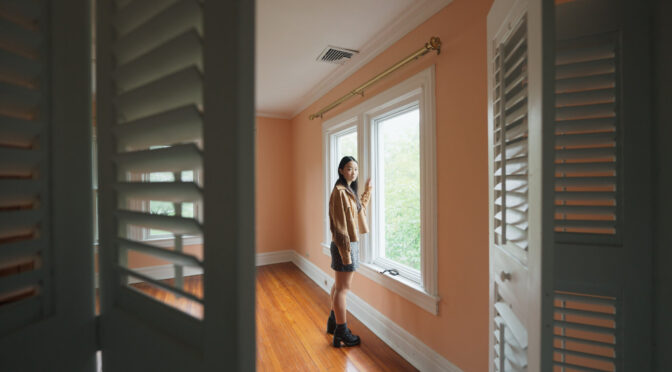Steven Soderberg continues the innovations of his late style work with PRESENCE, a formally inventive approach to the haunted house story that cleverly uses its central cinematographic gimmick to deepen the film’s narrative. Though the story is small in scope and treads into cliché a little much, Soderbergh draws out the human drama in a way that elevates the film above a technical experiment.
When a family of four moves into a new house, the daughter Chloe (Callina Liang) starts to sense a presence in the home alongside them. Through the eyes of the mysterious Presence, we witness the strains in the family’s relationships: Chris (Chris Sullivan) considers leaving his wife, Rebecca (Lucy Liu), because of her potential criminal activities at work; Chloe cries herself to sleep after the tragic death of her best friend; and Tyler (Eddy Maday) is growing into a bully, more concerned with the approval of the popular Ryan (West Mullholland) at school than his sister’s growing psychological distress. The Presence watches all this family drama, and we begin to ask if we’re seeing through the eyes of a benign watcher or something more sinister.
The central gimmick of PRESENCE is that the entire film is shot from the point-of-view of the Presence. Every shot is a long take as the ghost follows family members around the house or simply watches the ongoing family drama, implicating the audience in the strange intrusiveness of the voyeuristic spirit that the family cannot see or address. Through this gimmick, the scariest parts of the film come when a character does look straight into the camera – straight at the audience and, by implication, straight at the Presence – as an indication that the character can see something they don’t fully understand.
“The comparative simplicity of the camera representing the Presence leads to a sense of immersion in the family drama rather than pulling the audience out of it to look for seams in its long takes.”
This kind of formal experimentation is not new for Soderbergh: his film UNSANE was shot entirely on several iPhone 7 Plus smartphones (albeit with a host of accessories including onboard monitors, microphones, different Moment lenses, the FiLMiC Pro and FiLMiC Remote apps, and a DJI Osmo stabilizer); his film BUBBLE had no script and only used non-professional actors; and he experimented with surreal non-linear storytelling in SCHIZOPOLIS. But unlike a film like Sam Mendes’ 1917 (the World War I movie ostensibly presented as two continuous shots), the central cinematographic gimmick of PRESENCE works unexpectedly well, never outstaying its welcome and working to reinforce the narrative rather than distract from it. The comparative simplicity of the camera representing the Presence leads to a sense of immersion in the family drama rather than pulling the audience out of it to look for seams in its long takes.
It helps that the family drama story is itself compelling, even if it’s a little heavy on American suburban tropes and wrapped up a little too neatly. David Koepp (screenwriter of JURASSIC PARK) ensures every character is well-drawn even if they do seem to fall into generic archetypes (the jock older brother, the cold businesswoman, the hotheaded dad). PRESENCE plays out more as a family drama with light supernatural elements than a full-throated horror film, and the drama works well from that perspective. By the end, everything is wrapped up a little too neatly: it would have been nice to leave feeling some of the mystery of the film’s first thirty minutes.
PRESENCE may be destined to simply be another formally experimental work for Soderbergh, but there is enough compelling drama and character work that it deserves more consideration than that.

